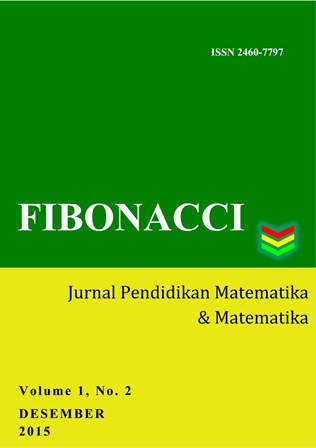PENGARUH MODEL PEMBELAJARAN THINKING ALOUD PAIR PROBLEM SOLVING (TAPPS) TERHADAP KEMAMPUAN PEMAHAMAN MATEMATIS SISWA
Main Article Content
Abstract
Article Details
Authors who publish with this journal agree to the following terms:
- Authors retain copyright and grant the journal right of first publication with the work simultaneously licensed under a Creative Commons Attribution License that allows others to share the work with an acknowledgement of the work's authorship and initial publication in this journal.
- Authors are able to enter into separate, additional contractual arrangements for the non-exclusive distribution of the journal's published version of the work (e.g., post it to an institutional repository or publish it in a book), with an acknowledgement of its initial publication in this journal.
- Authors are permitted and encouraged to post their work online (e.g., in institutional repositories or on their website) prior to and during the submission process, as it can lead to productive exchanges, as well as earlier and greater citation of published work (See The Effect of Open Access).
References
Arikunto, Suharsimi. (2012). Dasar-Dasar Evaluasi Pendidikan. PT Bumi Aksara: Jakarta.
Barkley, E. E., Cross, K.P., & Major, C.R. (2012). Collaborative Learning Techniques.
Bandung: Nusa Media.
Jonassen, David H. (2003). Learning to Solve Problem. San Fransisco: Pfeiffer.
Rohman, M. Gani. (2013). Keefektifan Model Pembelajaran Tapps Terhadap Kemampuan
Pemecahan Masalah Matematika Kelas X Materi Ruang Dimensi Tiga Di Man 2
Kudus. Semarang: UNNES.
Sanjaya, Wina. (2006). Strategi Pembelajaran : Berorientasi Standar Proses Pendidikan.
Jakarta: Kencana.
Sharan, Shlomo. (2014). The Handbook Of Cooperative Learning. Yogyakarta: Istana
Merdeka.
Susanto, Ahmad. (2013). Teori Belajar & Pembelajaran di Sekolah Dasar. Jakarta: Kencana.
Uno, B. Hamzah. (2007). Model Pembelajaran Menciptakan Proses Belajar Mengajar yang
Kreatif dan Efektif. Jakarta: Bumi Aksara.
Whimbey, A., Lochhead, J., Narode, R., (2013). Problem Solving and Comprehension.
Routledge: New York.

